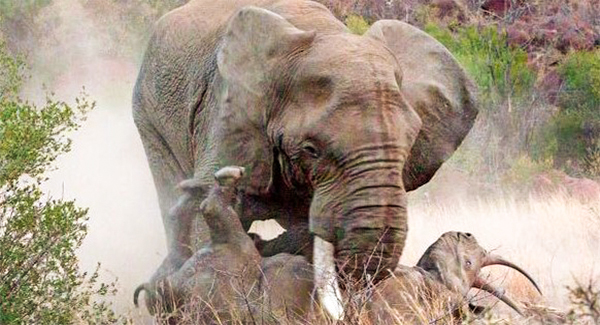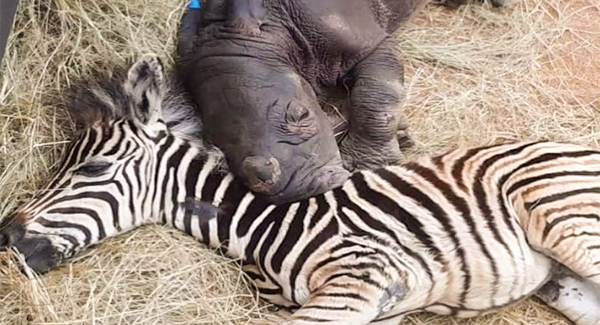The cheerful rhino calf was spotted during a safari tour in St Lucia, South Africa. Bouncing around like any spring lamb (just a lot heavier), the baby rhino went off ahead of his mother’s heavy footsteps.

Robyn Bamber, a safari tour guide, managed to capture some amazing photos of the baby animal as it leapt and posed for the camera. She had spotted the rhinos at the end of a half-day drive safari for Heritage Tours & Safaris in the South African bush.

The cute baby rhino, estimated to weigh an impressive 42 kg, jumped and kicked, then charged at Bamber and her guests, as his 1.8 ton mother seemed to cast a proud look towards him.

“He came as close as about 1.5m from the truck, giving a little snort of pride at astonished tourists before turning tail and disappearing off into the wilderness.”

Robyn Bamber said: “At first sight the little rhino had me in awe, then shortly after scrambling for my camera. He had guests and myself all entertained and laughing.

“The female rhino started to make her way up the road away from us with the little rhino racing ahead. Then, as if to say, “Mum watch this”, the little rhino came charging straight towards us.”

South Africa is thought to have a population of around 16,225 rhinos living in the wild, but ʟᴏsᴇs more than two a day to ᴘᴏᴀᴄʜɪɴɢ. That is so sad.

Rhinos have two horns, the foremost of which is far more prominent than the rear, that have been known to grow up to five feet long. Both males and females use their horns as weapons: the former in courtship ʙᴀᴛᴛʟᴇs and against ᴀᴛᴛᴀᴄᴋᴇʀs, the latter to protect their young.

It is these horns which have been their downfall, with many ᴋɪʟʟᴇᴅ for their hard, hair-like growths. In many Asian countries there is a massive demand for rhino horns because of folk medicine which claims it is an ᴀᴘʜʀᴏᴅɪsɪᴀᴄ. In North Africa and the Middle East the horns are prized as handles for ornamental daggers.




